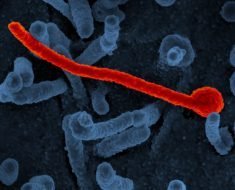A recently published article in the European Heart Journal shows that the presence of sticky, aggregation-prone LDL in circulation is an independent predictor of cardiovascular death. This novel finding indicates that in addition to LDL-cholesterol levels, the quality of the cholesterol-carrying LDL particles also needs to be considered when estimating the cardiovascular risk of a person.
Scientists at the Wihuri Research Institute and the University of Helsinki, Finland, developed a method that can be used to monitor the quality of circulating LDL particles by measuring the susceptibility of the LDL particles to aggregate.
The LDL aggregates have a tendency to accumulate in the arterial wall, where they induce the formation of cholesterol-rich plaques. LDL aggregates can also induce local inflammation in the plaques. An inflamed plaque can then rupture and cause myocardial infarction.
The scientists found that LDL isolated from patients with known cardiovascular disease was more aggregation-prone than LDL isolated from healthy individuals. The most aggregation-prone LDL was found in those patients who later died from cardiovascular disease.
“This is the first study to show that there are measurable inter-individual differences in the aggregation susceptibility of LDL particles, and that aggregation-prone LDL is predictive of cardiovascular death,” summarizes Dr. Katariina Öörni, who led the research team.
There is also good news: the study showed that the quality of LDL particles can be improved by cholesterol-lowering medication or by healthy diet. “Increase in consumption of vegetable oils and decrease in consumption of sugar decreased LDL aggregation,” describes Maija Ruuth, the first author of the research article.
Source: Read Full Article





